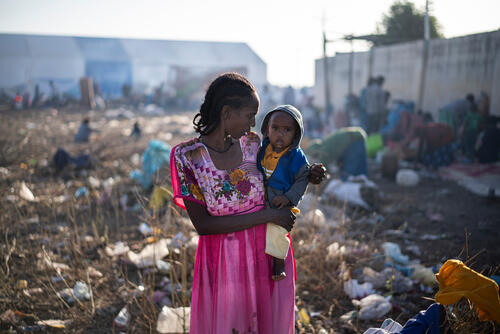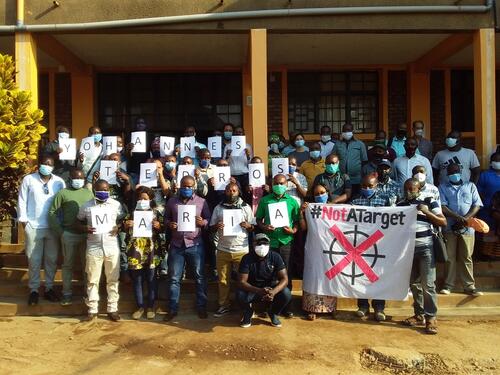Hundreds of thousands of people have been forced to leave their homes in the Tigray region of northern Ethiopia after fighting broke out in early November 2020, according to OCHA.<a href="https://reliefweb.int/report/ethiopia/ethiopia-tigray-region-humanitarian-update-situation-report-6-january-2021">ReliefWeb - Ethiopia - Tigray Region Humanitarian Update Situation Report, 6 January 2021.</a> Some 50,000 people have crossed in to Sudan as refugees, while many others are displaced within the region, staying in towns, remote areas or trapped between localised outbreaks of fighting. Teams from Médecins Sans Frontières (MSF) have been providing medical care to people in Tigray since mid-December.
People in Tigray short on shelter, food, water, communications
For those areas MSF teams could access, tens of thousands of displaced people are living in abandoned buildings and on construction sites in northwestern and western areas around the towns of Shire, Dansha and Humera, while others have found refuge in host communities in the east and south of the region. These people have very limited access to food, clean water, shelter and healthcare. MSF teams have also heard reports that many people are still hiding in the mountains and in rural areas across the region.
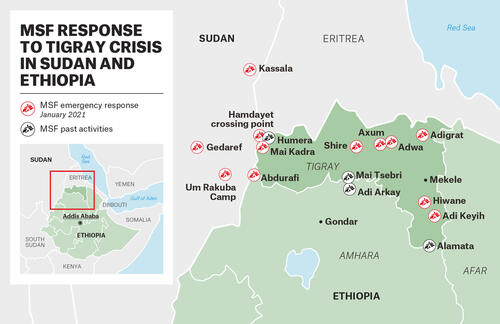
In some of the places visited by MSF, power lines are cut, water supplies are not functional, telecommunications networks are down, banks are closed, and many people are afraid to return to their places of origin because of the ongoing insecurity.
Often, they have no way to contact their relatives or to buy essential items for their households. Some people are also hosting family members displaced from elsewhere in the region, creating an additional burden on them.
The fighting broke out at harvest time in a region where crops were already badly damaged by desert locusts, leaving food in short supply. Before the fighting started, nearly one million of people were already dependent on humanitarian assistance. Although aid agencies and local authorities are distributing food in some areas, they are not reaching everyone.
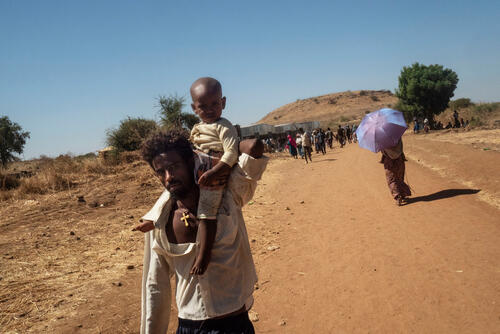
MSF providing medical care in hospitals and clinics in Ethiopia
In southern Tigray, MSF teams are running mobile clinics and have restarted some services at health centres in the towns of Hiwane and Adi Keyih, alongside staff from the Ministry of Health. Between 18 December and 3 January, MSF teams in Hiwane and Adi Keyih provided 1,498 medical consultations to people.
In eastern Tigray, MSF is supporting the hospital in Adigrat, the region’s second city. When an MSF team arrived in the city on 19 December, they found the hospital, which served a population of more than one million, had partially stopped functioning. Given the urgency of the situation, MSF sent oxygen cylinders and food for patients and their caretakers from Mekele, 120 kilometres further south, and referred patients to Afder hospital in the region’s capital city.
Since 23 December, MSF medical teams have been running the hospital’s emergency room, as well as the medical, surgical, paediatric and maternity wards. They are also providing outpatient care for children under five. In total, MSF received 760 patients in the emergency room of Adigrat’s hospital from 24 December to 10 January.
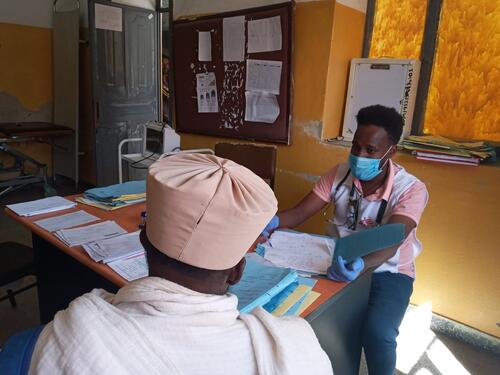
Estimates as many as four million with no access to healthcare
In central Tigray, as far west as the towns of Adwa, Axum and Shire, MSF teams are providing some of the displaced people with basic healthcare and supporting health facilities which lack essential supplies such as medications, oxygen and food for patients. MSF teams estimate that between three and four million people in central Tigray have no access to basic healthcare.
In the western towns of Mai Kadra and Humera, MSF has provided support to some health centres and has been supporting up to 2,000 internally displaced people by providing medical services, supplying water, sanitation and hygiene products, and constructing emergency latrines. Most of the internally displaced people are no longer there.
Prior to the conflict, the population in Tigray, Ethiopia, was around 5.5 million people, including more than 100,000 internally displaced people and 96,000 refugees who were already dependent on food assistance, according to the UN .
As well as our activities in Tigray, MSF teams have provided healthcare to thousands of displaced people at the border of Amhara region since November. They have also supported several health facilities with medical supplies and provided nutritional and mass casualty trainings to Ministry of Health staff. MSF is also responding to the needs of Ethiopian refugees across the border in Sudan.



